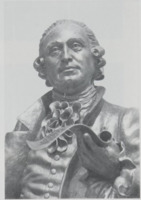Final Thoughts & Further Research
Although the statue is currently recognized as an integral part of George Mason University, the university did not view the creation of its namesake as a priority. During the late 80s and mid 90s, the university prioritized expansion (Center for the Arts, Johnson Center), attracting notable professors, and other scholarly endeavors in an effort to build a strong academic reputation. Consequently, student life was lacking in terms of services such as parking, housing, and school spirit.
This statue was built by the students, for the students. It began as an initiative to garner school spirit and establish a sense of community amongst the student body and was managed by students for nearly a decade before it's commission by the Mason Fund for the Arts. The idea of students impacting grand change on campus is an unseeming thought; however, this statue serves as a physical manifestation of student power and the importance of prioritizing students interests.
For future research:
- Examining SCRC’s oral history collection-- particularly Edwards Randall, Senator Colgan, George Johnson, and John O’Connor.
- The activities of Student Government between 1992-1995.
- The D.C. George Mason memorial.
- The George Mason statue on GMU’s Korean campus.
- Closely tracing George Mason University from an administrator level between 1989-1996.

